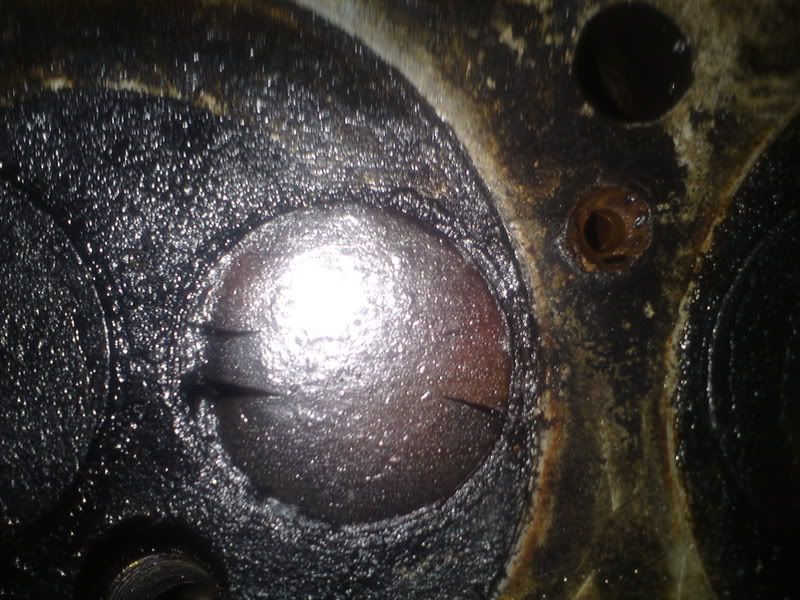I've had running problems with my car now for some time, I've been in there with all sorts of gadgetry and have dialled the engine round in circles temporarily getting somewhere only for the car to frustratingly get worse shortly after. Recently the car has been down on power and audibly sounding like it was on three cylinders, I pulled the plugs and number two was much oilier/sootier than the rest and not having a compression tester to hand I poked a bore scope (endoscope)down the cylinder whilst turning the engine over to open the valves and bring the pistons up to TDC, as soon as number two exhaust opened it was very obvious what the problem was, visible large cracks around the outside of the valve head. I stripped it tonight and thought I'd post the pictures up to show what can happen when it goes wrong.

A while back now somebody posted a similar pic of a valve that had gone worse than this and the symptoms I experienced seem to definitely indicate this type of failure although with a compression test carried out some time ago on this engine there was only a small variance between cylinders, not enough to shout valves or rings at you at any rate.
I have a s/h head on it's way to me and I intend to convert the head in the above picture to unleaded and possibly treat it to some posh stainless valves but I shall have to look into compatibility/suitability first, need to get this one put together first as it is my daily transport.

A while back now somebody posted a similar pic of a valve that had gone worse than this and the symptoms I experienced seem to definitely indicate this type of failure although with a compression test carried out some time ago on this engine there was only a small variance between cylinders, not enough to shout valves or rings at you at any rate.
I have a s/h head on it's way to me and I intend to convert the head in the above picture to unleaded and possibly treat it to some posh stainless valves but I shall have to look into compatibility/suitability first, need to get this one put together first as it is my daily transport.

